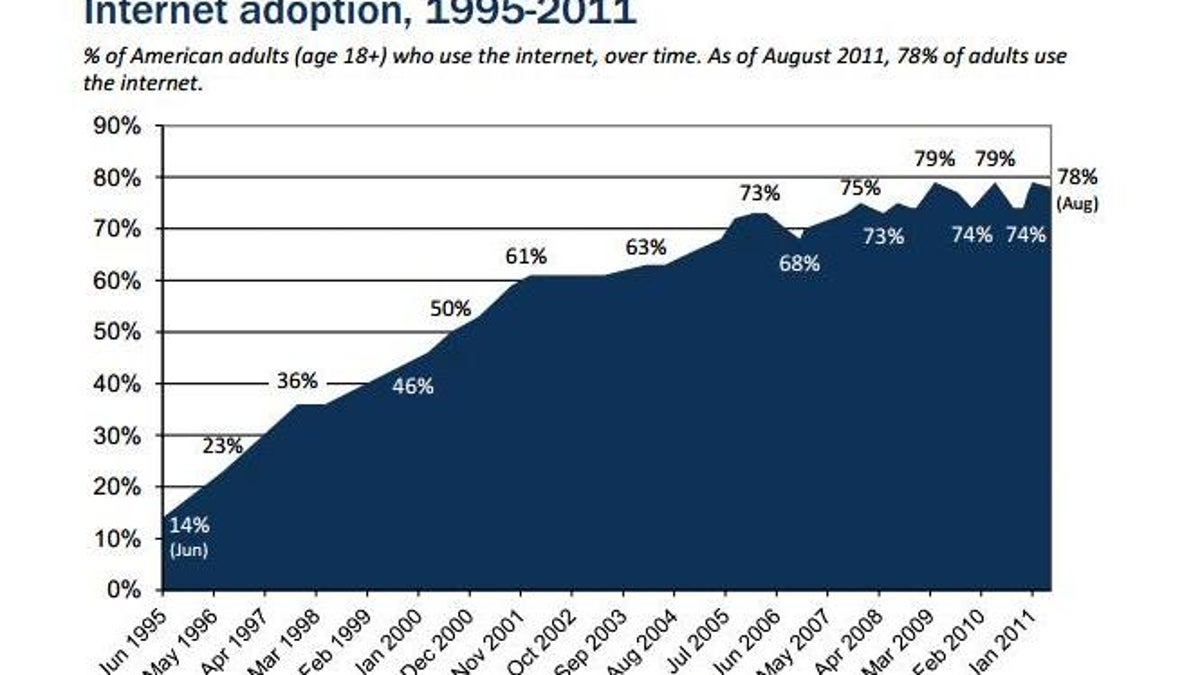Pew: Smartphones narrow digital divide
Surprising as it might be to the digitally active, one in five adults in the U.S. is not online for lack of interest or financial reasons.

Mobile devices are bringing more Americans online, but one in five adults is still not on the Internet, according to a Pew Internet survey published today.
The study, based on more than 2,000 phone calls in English and Spanish, shows that certain segments of the U.S. population are not inclined to go online. The top reasons given were lack of interest, no computer, expense, or the difficulty of getting online.
"Senior citizens, those who prefer to take our interviews in Spanish rather than English, adults with less than a high school education, and those living in households earning less than $30,000 per year are the least likely adults to have Internet access," according to the study.
People with disabilities are much less likely to go online compared to other adults, with 2 percent physically unable.
There's a clear trend toward more mobile devices that is giving people access to Internet services, often wirelessly. People who are in the younger demographics are much more likely to go online wirelessly with a laptop or cell phone, including 88 percent of people aged 18 to 29.
About 46 percent of American adults has a smartphone, with two in five adults having a cell phone that isn't a smartphone. Tablets, meanwhile, are owned by 19 percent of the survey respondents.
Mobile devices are spurring more people to get online and spend more time online. "These mobile users go online not just to find information but to share what they find and even create new content much more than they did before," according to the report.

